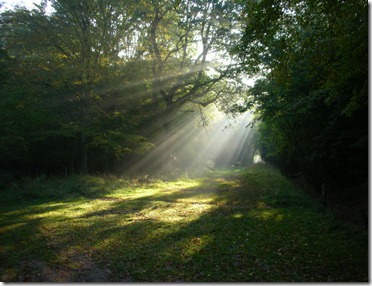This is quite a long post. Feel free to download the pdf for later reading here... (1.2 Mb pdf)
Tracking can be considered a re-enactment of a journey; a journey that something or someone has previously taken. It can also be a new journey for the tracker. Not having first-hand experience of the original journey, trackers must interpret what is presented before them not only in the way of evidence, but whatever the environment, the geography and even the climate present. Tracking is a journey through a landscape in which relationships are formed. These relationships are formed between the tracker, the quarry, the environment, and space and time. To be successful, these relationships must be personal to the tracker. It isn’t just about the footprints in the sand; nor is it just about following the signs to the quarry. Tracking is about vision, or the ability to see what others cannot. It can be about deduction and speculation based on the best evidence that the landscape, the environment & space and time provides.

On the 8th July 2001 Jeffrey Hodgson disappeared while on holiday on the island of Ibiza.
On 15th October 2002, 15 months after he disappeared, Jeffrey’s body was found by people who were climbing a remote headland cliff near Cala Llonga. It would appear that he had been there since he vanished. How he got there unaided remains a mystery.
Jeffrey Hodgson, was a mentally handicapped man with a mental age of an eight year old child. He vanished from the reception area of the Sirenis Playa Hotel in the Cala Llonga while his parents Beryl and Derek were checking into the hotel.
4 years ago, a family holiday brought me to the exact same area. Unaware of the story at the time, I, too, climbed the steep sides of the Cap de Llibrell and stared in wonder at the views from the top.
When I heard of the story back in the UK, the mind of a forensic tracker went into over-drive. What attracted Jeffrey to the steep slopes and why did he choose such a difficult route? What made Jeffrey suddenly veer off the gravel track and become lost? Why did he die? Why did the Spanish authorities wait for so long to start the search? Why did the UK coroner declare an open verdict even though there was apparently no criminality involved? If trackers had been deployed, would they have found Jeffrey before he so tragically died?
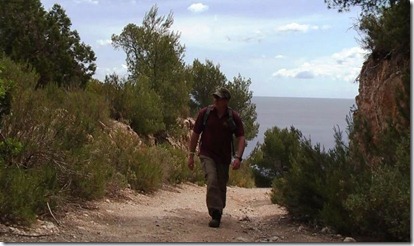
In May 2012, I went back to Cala Llonga to recreate Jeffrey’s journey. It was also my journey as a tracker. Although I had taken part in forensic re-enactments as a detective, I had never done this as a tracker. I had a number of hypotheses, but like any good detective, I put these to the back of my mind as I zoned-in to the landscape and created a blank canvass over which the journey’s map would be painted.
It was difficult to put my mind into the mind of a mentally handicapped man, and I preferred to look through the eyes an eight year old child. I had no idea how physically able Jeffrey had been. I decided to try and concentrate on his abilities, not disabilities.
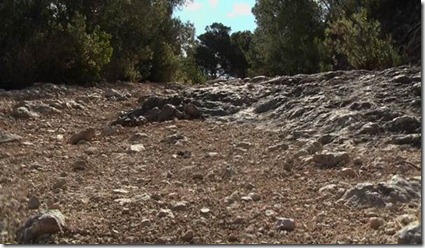
I started my journey at the foot of the steep, loose gravel path leading up to the top of the Cap de Llibrell aided by my brother-in-law, who threw himself into a supporting role. The journey to the top would take 20 minutes of steady and determined walk. The left hand edge of the path dropped away as the steep sides fell into the bay far below. Although the path was relatively wide, a misplaced footstep close to the edge would send anyone spiralling down the hill, most probably leading to serious injury. But this was nowhere near where Jeffrey had died. Incredibly, it seems, Jeffrey survived this first part of the journey; apparently, and, as concluded by the Spanish police, on his own.
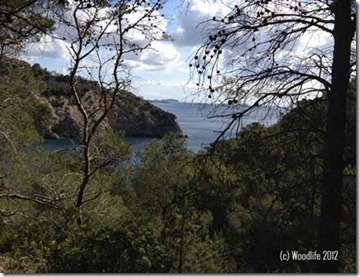
After 15 minutes of walking I was sweating from exertion and the heat and my heart-rate had risen to 110. I knew Jeffrey’s journey was taken during the evening; but even so, a humid July would have been enough to cause Jeffrey to struggle. This fact alone provoked more incredulity that he had undertaken his journey alone. This would not have been an easy journey for Jeffrey. Animals will proceed along a trail for a reason and they must have an incentive of some kind. It may be a means of travelling from one place to another for a particular purpose. It may be a path used by more than one species for ease of use, speed, or safety. It may be a trail selected as a route to a home, a safe place or feeding area. For Jeffrey there would have been nothing - absolutely nothing that would have attracted him along this steep ascending trail.
The path continued to a lower ledge, a good 20 meters wide. One side rose to the summit which is only accessible by a small animal path. The other side provided magnificent views of the Mediterranean with the island of Formentera in the distance. This edge dropped down into a ravine. For Jeffrey there would only be the blackness of the sea at the bottom of the 600 foot headland.
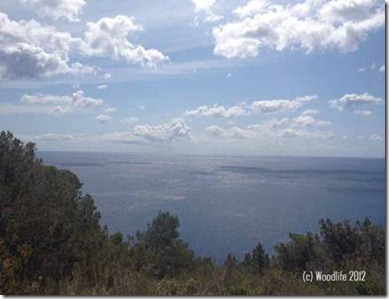
But, at last, I saw my first piece of real evidence; a small fragment of a burnt piece of wood. A further search of the area revealed some fire-scars. A vision of people sitting around the fire on a balmy July night quickly entered my head. Although the fire wouldn’t be visible at the bottom of the trail, the likelihood that people would meet there on an occasional or even regular basis would be a realistic interpretation of the number of fire-scar sites in the area. A previous hypothesis returned and made its way to the forefront of my brain.
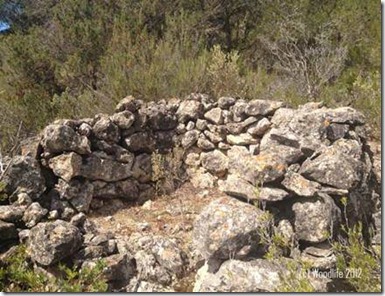
The next part of the journey was the most difficult. I had to break off from the gravel path and descend vertically into a narrow ravine of harsh, low-lying scrub. The distance to travel would only be between 300 – 400 meters. I followed the GPS to the co-ordinates where Jeffrey’s body was found. I did not have an accurate position as I had been unable to contact the family. Trackers eyes searched for any evidence. An old path ran to the foundations and dilapidated walls of an old stone-built shelter. There was no sheep or shepherds here. Most likely it was an old Roman path and shelter originally built by soldiers. There were foundations of a Roman watchtower at the top of the headland. The location was close - but still too high for the coordinates I was working on.
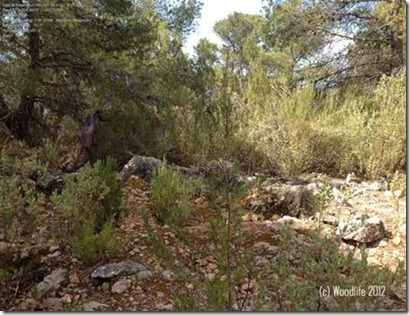
I descended lower and deeper into the ravine, and the slope became steeper. I was now standing at an angle of 45 degrees and I was still about 50 meters from the location. 30 meters later and I was at 60 degrees. I was hanging on to the low growing vegetation to stop myself slipping down the precarious slope. I had no rope and had never realised it was going to be so steep. I was now on hands and knees. The GPS told me I had arrived. Jeffrey had been found here by tourists climbing the headland. There was no path. Jeffrey had somehow managed to get himself down here, allegedly, on his own. There was no evidence of foul play. No evidence of torn clothes.
I could not traverse the area or search it properly. I saw and felt nothing as I looked amongst the low, harsh, unforgiving vegetation that had already torn a speed hook from my boots. I became concerned for my own safety as I hung on to a branch and slipped on the loose substrate. With regret, I decided that this part of my journey was over and I ascended to the ledge and subsequently down the track to the safety of the bay below.
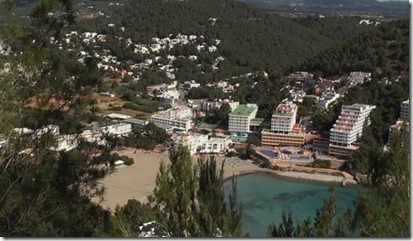
The next night, I decided to investigate where the Hodgson’s had booked into the Sirensis hotel. The hotel was on the other side of the bay. It was sprawling complex with a large reception area. I imagined the confusion as families tried to book in. Turning right outside the hotel, you are presented with a view over the bay. There are only a few lights from the opposite hotel. The headland would have been in darkness; an indistinct silhouette in the near distance.
I turned left and walked away from the hotel into the little town. The town is centred at the foot of the bay and is about 5 minutes’ walk from the hotel. It comprises of a handful of tourist shops and four or five restaurants. The hotel is on the east side; the path to the headland on the west. What had attracted Jeffrey to the opposite side of the bay?
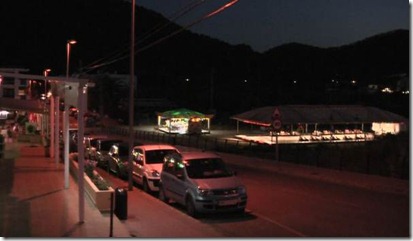
It didn’t take tracking skills to see what may have been the catalyst to such a disastrous journey. Behind the rows of shops on some waste ground, a small fun-fair had started up. Dodgems, bright lights and a small roundabout spun round and shouted out to passing folk.
Had Jeffrey spotted this on the coach journey leading up to the hotel? It was certainly en route and would have been consistent with timings. Had he been attracted to the bright lights of the fun-fair and wandered down to it while his parents booked into the hotel? Had he met up with some people who had led him up to the headland to sit around the inviting open fire? Once up there, had he fallen ill (he suffered from epilepsy) and been abandoned? Had he recovered, panicked, and tried to find a way down to the bay by what he thought was the quickest means, losing his way as he did?
For a Tracker, there are no tracks. Signs of Jeffrey’s passing have been eroded by time. So has any evidence of the footfalls that might have accompanied his journey. What happened on the night of the 8 July 2001 is, of course, open to speculation. I can’t even challenge any evidence that was, or wasn’t found 11 years ago? But a Tracker’s journey all these years later has revealed that Jeffery’s journey simply cannot have been as reported by the authorities. The landscape does not lie. Jeffrey could not, and did not make the journey alone. His family had every right to feel that not everything was done that could have been done by the Spanish police. The UK coroner was correct in determining an open verdict. A high risk, handicapped person such as Jeffrey would have invoked a full and immediate search of the area using all possible resources in the UK. What is more – a team of trackers deployed immediately or even early the next morning would have had a very good chance of fining Jeffrey using the available tracks, signs and indicators that undoubtedly would still have been present.
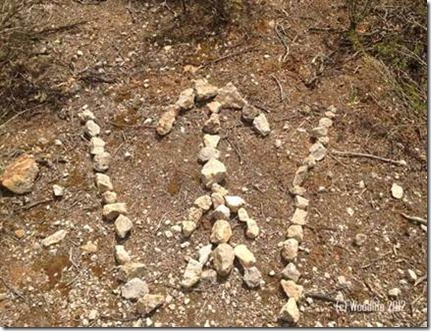
We left a small memorial to Jeffery’s memory. It pointed down the ravine to the spot where Jeffrey was found. It also signified a Tracker’s journey - one which formed close and emotional relationships with the landscape and with the past. It re-enacted a similar journey one taken by a man who may have had some of those relationships disrupted in some way.
